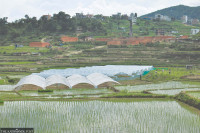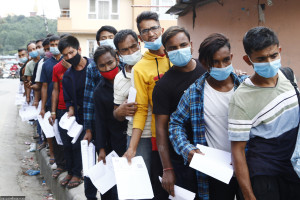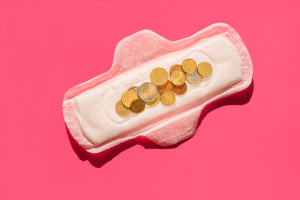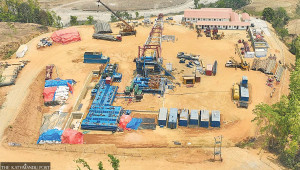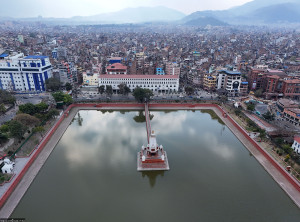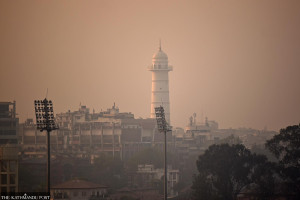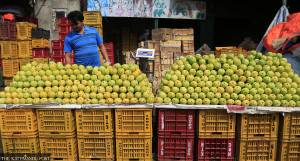Money
Foreign currency inflow shrinks on virus crisis
Earnings are down with remittance, exports and tourism all taking a direct hit from the pandemic.
Prithiviman Shrestha
Commercial banks are exchanging less foreign currency with the central bank as the Covid-19 outbreak bites into cash inflows.
Banks sell their excess foreign exchange to Nepal Rastra Bank on a daily basis which normally amounts to $20-40 million. They enter their proposals to sell foreign funds on the central bank's website till 12 noon, and get domestic currency in return.
Nowadays, commercial banks are not selling much foreign exchange to the central bank as they are keeping larger stocks for themselves through inter-bank trading as the inflow has slowed to a trickle with remittance, exports and tourism all taking a direct hit from the pandemic.
“They are still selling foreign exchange to us, but in very small amounts,” said Bam Bahadur Mishra, chief of foreign exchange management department at Nepal Rastra Bank. “This is natural because the inflow of remittance has decreased, and banks are not receiving foreign exchange from tourism and exports,” he added.
“The amount of foreign exchange they are selling to the central bank now is very insignificant,” another central bank official said.
Commercial banks concur. “Given the huge volatility in the global foreign exchange market, we have witnessed improved demand for foreign exchange in the inter-bank market on account of increased foreign exchange demand to hedge their payment obligations,” Pranu Singh, head of corporate affairs, brand and marketing at Standard Chartered Bank Nepal, told the Post.
“This could result in less foreign exchange surplus remaining with banks to sell to Nepal Rastra Bank.”
Bankers admit that due to reduced inflow of remittance, they don’t have as much foreign exchange as they used to have in the past.
Anil Shah, chief executive officer at Nabil Bank, said that the inflow of remittance had started to decrease in recent days. “We are getting hardly any foreign exchange from tourism or exports,” he said.
Consequently, the quantity of foreign exchange the bank is selling to the central bank has shrunk to 80 percent of previous amounts.
Singh said that they had observed a decrease in forex flows over the past few weeks.
“With Covid-19 and the recent lockdown across the globe, we are witnessing a slowdown in foreign exchange coming into the country; and we expect the inflow to go down further until the situation improves,” she said.
Before the global health crisis began, banks usually had surplus foreign exchange on account of remittance which makes up more than 26 percent the gross domestic product. They had extra funds which they sold to the central bank after fulfilling their market requirements.
The central bank maintains foreign exchange reserves based on the funds received from commercial banks. An adequate reserve of foreign exchange is essential to ensure that the country is able to import the desired products and services from abroad.
Nepal is heavily dependent on imports for a number of essential goods such as food items, medicines and fuel. Petroleum products are the single largest import item.
In the last fiscal year 2018-19, Nepal imported petroleum products worth Rs216.42 billion, according to the Trade and Export Promotion Centre. The country even imported cereal worth Rs51.8 billion, the centre said.
Nepal also spends a high amount on importing construction materials such as iron and steel products and machinery which are considered capital goods that help boost economic activities in the country.
The country needs to have sufficient stocks of foreign currency to convince potential foreign investors that they will be able to repatriate dividends easily. As of the first seven months of the current fiscal year, the country's foreign exchange reserve stood at Rs1,096 billion which is adequate to import goods and services for 8.5 months, the central bank said.
Nepal Rastra Bank officials said that there was no need to worry about foreign exchange at the moment.
“We are not getting foreign exchange like before from remittance, exports and tourism. But we are also not spending foreign exchange for imports, travel and students who go abroad due to the global lockdown,” said Mishra. “As a result, the foreign exchange reserve is largely stable at the moment.”
But central bank officials and economists warn that the situation may worsen in the future if the job markets for Nepali migrant workers shrink in the destination countries should the Covid-19 crisis linger.
Remittance is the single largest source of foreign exchange earning for the country. In the last fiscal year, the country received remittance amounting to Rs879 billion.
“If the foreign exchange reserve starts to go down, we may have to discourage imports of luxury goods, cosmetics and high-end vehicles, among others.” said Mishra. “We may have to rethink the repayment schedule of foreign loans which are increasing in recent years.”
The government appears to have sensed a possible crisis. So the cabinet on Sunday decided to ban imports of expensive cars costing more than $50,000, foreign liquor, betel nut, pea, peppercorn and dried date. It also reduced the gold import quota to 10 kg per day from 20 kg.
“This is a signal that the government may have to take stringent measures if the foreign exchange reserve starts receding rapidly,” said Gunakar Bhatta, spokesperson for the central bank.




 20.51°C Kathmandu
20.51°C Kathmandu



